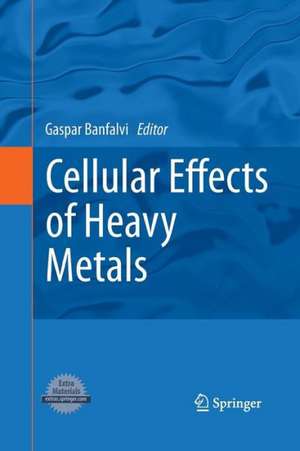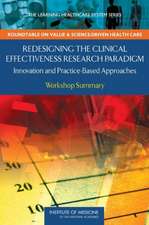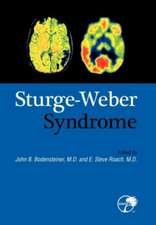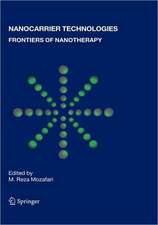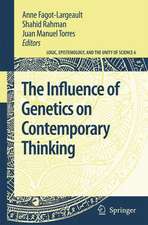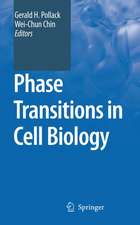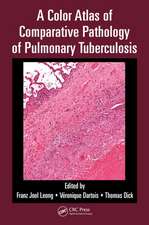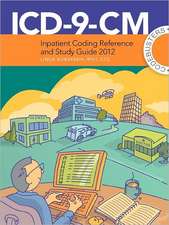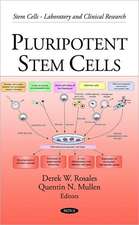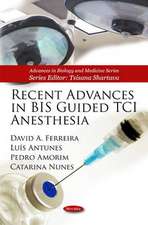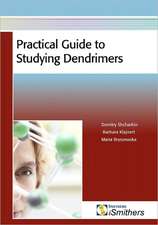Cellular Effects of Heavy Metals
Editat de Gaspar Banfalvien Limba Engleză Paperback – 25 noi 2014
| Toate formatele și edițiile | Preț | Express |
|---|---|---|
| Paperback (1) | 1413.35 lei 6-8 săpt. | |
| SPRINGER NETHERLANDS – 25 noi 2014 | 1413.35 lei 6-8 săpt. | |
| Hardback (1) | 1420.29 lei 6-8 săpt. | |
| SPRINGER NETHERLANDS – 11 mar 2011 | 1420.29 lei 6-8 săpt. |
Preț: 1413.35 lei
Preț vechi: 1487.73 lei
-5% Nou
Puncte Express: 2120
Preț estimativ în valută:
270.48€ • 293.70$ • 227.20£
270.48€ • 293.70$ • 227.20£
Carte tipărită la comandă
Livrare economică 22 aprilie-06 mai
Preluare comenzi: 021 569.72.76
Specificații
ISBN-13: 9789400792258
ISBN-10: 9400792255
Pagini: 364
Ilustrații: XIV, 348 p.
Dimensiuni: 155 x 235 x 19 mm
Greutate: 0.51 kg
Ediția:2011
Editura: SPRINGER NETHERLANDS
Colecția Springer
Locul publicării:Dordrecht, Netherlands
ISBN-10: 9400792255
Pagini: 364
Ilustrații: XIV, 348 p.
Dimensiuni: 155 x 235 x 19 mm
Greutate: 0.51 kg
Ediția:2011
Editura: SPRINGER NETHERLANDS
Colecția Springer
Locul publicării:Dordrecht, Netherlands
Public țintă
Professional/practitionerCuprins
Introduction. Chapter 1. Heavy Metals, Trace Elements and their Cellular Effects. I. Heavy metal toxicity in microbes. Chapter 2. Toxic Metal/Metalloid Tolerance in Fungi – A Biotechnology-Oriented Approach. Chapter 3. Interference of chromium with cellular functions. Chapter 4. Saccharomyces cerevisiae as a Model Organism for Elucidating Arsenic Tolerance Mechanisms. II. Heavy metal induced toxicity in insect cells. Chapter 5 . Heavy Metal Toxicity in an Insect Cell Line (Methyl-HgCl, HgCl2, CdCl2 and CuSO4) . III. Genotoxic effects of heavy metals. Chapter 6. Cellular Changes in Mammalian Cells Induced by Cadmium. Chapter 7. Chromatin toxicity of Ni(II) Ions in K562 Erythroleukemia Cells. Chapter 8. Genotoxic Chromatin Changes in Schizosaccharomyces pombe Induced by Hhexavalent Chromium (CrVI) Ions. Chapter 9. Chromatin Changes upon Silver Nitrate Treatment in Human Keratinocyte HaCaT and K562 Erythroleukemia Cells. IV. Chemical carcinogenesis induced by heavy metals. Chapter 10. Heavy Metal-Induced Carcinogenicity: Depleted Uranium and Heavy Metal. Chapter 11. Role of Oxidative Damage in Metal-Induced Carcinogenesis. V. Cellular responses to heavy metal exposure. Chapter 12. Non-native Proteins as Newly-identified Targets of HeavyMetals and Metalloids. Chapter 13. Cellular Mechanisms to Respond to Cadmium Exposure: Ubiquitin Ligases. Chapter 14. Metals Induced Disruption of Ubiquitin Proteasome System, Activation of Stress Signaling and Apoptosis. VI. Biomakers. Chapter 15. Blood Lead Level (BLL, B-Pb) in Human and Animal Populations: B-Pb as a Biological Marker to Environmental Lead Exposure. VII. Removal of heavy metals. Chapter 16. Removal of Heavy Metal Sulfides and Toxic Contaminants from Water.
Recenzii
28th of August, 2010
Referee’s opinion
Cellular effects of heavy metals
edited by Gáspár Bánfalvi
The aim of this book is challenging: an extended review in different biological models about the physiologic role of heavy metals in one hand, and detailed summary of pathological consequences of heavy metal exposure in the other hand. The question is discussed in different evolutionary stages from the microbes and plants to the highly evolved mammalians. Theoretical and practical aspects of both fields are more extended then a regular size of a handbook. I would like to lie down my opinion: the editor very successfully solved this contradiction. The structure of the handbook is well balanced. Most important fields are selected in the extended and divergent literature. Authors of the 18 chapters are carefully numbered.
The biological importance of heavy metals in physiologic functions and in pathologic alterations is equally interesting for specialist working in environmental biology, for medical doctors working in public health, for researches in cellular biology fundamental science, for students studying biology, or biologists with simple interest in current results of this field.
The scientific content of the all 18 chapters is high quality. The cited literature is appropriate but some discrepancies are among the chapters in number of the cited articles (e.g. see Chapter No.4 and No, 9). Figures and tables and their legends are mostly informative. More demonstration materials – if the size of this book takes possible – would be remarkable help for readers. However, the divergent field of the chapters increases the importance of a general summary of the book. The “Introduction” is appropriate, but not achieves a framework of the divergent chapters and not enough strongly summarizes a guideline of the whole book.
I suggest a careful remodelling the “Introduction” according to the general message of the book. Some other small details are personally discussed by the editor.
I straight suggest publishing this book after the suggested revision.
Peter Nemeth MD., PhD.
Professor of immunology and biotechnology
University of Pécs, Hungary
Referee’s opinion
Cellular effects of heavy metals
edited by Gáspár Bánfalvi
The aim of this book is challenging: an extended review in different biological models about the physiologic role of heavy metals in one hand, and detailed summary of pathological consequences of heavy metal exposure in the other hand. The question is discussed in different evolutionary stages from the microbes and plants to the highly evolved mammalians. Theoretical and practical aspects of both fields are more extended then a regular size of a handbook. I would like to lie down my opinion: the editor very successfully solved this contradiction. The structure of the handbook is well balanced. Most important fields are selected in the extended and divergent literature. Authors of the 18 chapters are carefully numbered.
The biological importance of heavy metals in physiologic functions and in pathologic alterations is equally interesting for specialist working in environmental biology, for medical doctors working in public health, for researches in cellular biology fundamental science, for students studying biology, or biologists with simple interest in current results of this field.
The scientific content of the all 18 chapters is high quality. The cited literature is appropriate but some discrepancies are among the chapters in number of the cited articles (e.g. see Chapter No.4 and No, 9). Figures and tables and their legends are mostly informative. More demonstration materials – if the size of this book takes possible – would be remarkable help for readers. However, the divergent field of the chapters increases the importance of a general summary of the book. The “Introduction” is appropriate, but not achieves a framework of the divergent chapters and not enough strongly summarizes a guideline of the whole book.
I suggest a careful remodelling the “Introduction” according to the general message of the book. Some other small details are personally discussed by the editor.
I straight suggest publishing this book after the suggested revision.
Peter Nemeth MD., PhD.
Professor of immunology and biotechnology
University of Pécs, Hungary
Textul de pe ultima copertă
The term “heavy metals” is used as a group name of toxic metals and metalloids (semimetals) causing contaminations and ecotoxicity. In strict chemical sense the density of heavy metals is higher than 5 g/cm3. From biological point of view as microelements they can be divided into two major groups. a. For their physiological function organisms and cells require essential microelements such as iron, chromium (III), cobalt, copper, manganese, molidenium, zinc. b. The other group of heavy metals is toxic to the health or environment. Of highest concern are the emissions of As, Cd, Co, Cu, Hg, Mn, Ni, Pb, Sn, Tl. The toxicity of heavy metals is well known at organismal level, while less attention has been paid to their cellular effects. This book describes the toxicity of heavy metals on microorganisms, yeast, plant and animal cells. Other chapters of the book deal with their genotoxic, mutagenic and carcinogenic effects. The toxicity of several metals touch upon the aspects of environmental hazard, ecosystems and human health. Among the cellular responses of heavy metals irregularities in cellular mecha nisms such as gene expression, protein folding, stress signalling pathways are among the most important ones. The final chapters deal with biosensors and removal of heavy metals. As everybody is eating, drinking and exposed to heavy metals on a daily basis, the spirit of the book will attract a wide audience.
Caracteristici
Describes the biological importance of heavy metals Shows how heavy metals enter cells What happens inside the cells upon heavy metal uptake What chemical reactions are induced by heavy metals What metabolic pathways are hampered by these metals Includes supplementary material: sn.pub/extras
